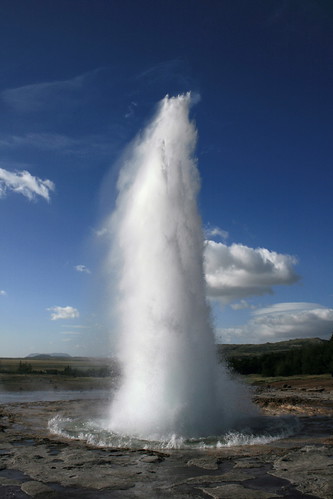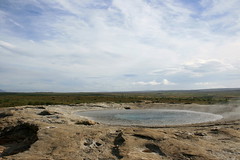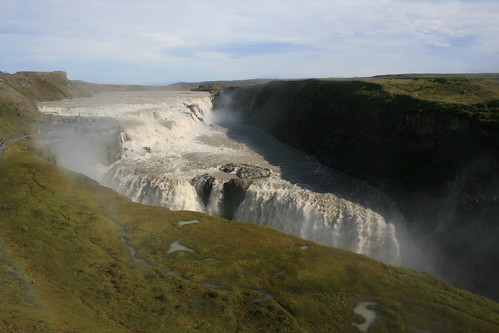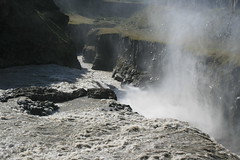
On the way to our first destination outside of Reykjavík, we left the Ring Road to see the Geysir thermal area and Gullfoss cascades.

According to information from the Geysir Center/Hotel Geysir, the Great Geysir is believed to be the namesake of geysers around the world, and geothermal activity in the area can be traced to earthquakes in the late 13th century. The Great Geysir went largely dormant in 1915, but has been more active since earthquakes in 2000. It currently erupts a few times a day to a height of 8 to 10 meters.
While we never saw the Great Geysir erupt, the nearby Strokkur geyser spouted several times during our stop. Since the early 1960s, Strokkur has been erupting 25 to 30 meters high every eight to 10 minutes. A network of short trails connects geothermal features in the area, but Strokkur is the main attraction.

A short distance up the road, is Gullfoss, a 32-meter double cascade where the Hvitá plunges into a narrow canyon and sends up a cloud of mist. Paths lead to a few viewpoints. Gullfoss.org relates the story of a failed effort to build a hydroelectric plant that would have destroyed the falls.

After stopping to see Geysir and Gullfoss, we went on our way to Fjallabak Nature Reserve for some hiking and a few nights in a mountain hut.
Here are more photos of Geysir and Gullfoss.
Location: From Selfoss on the Ring Road, Geysir is about 55 kilometers northeast on Route 35. Gullfoss is 15 km farther northeast on Route 35.